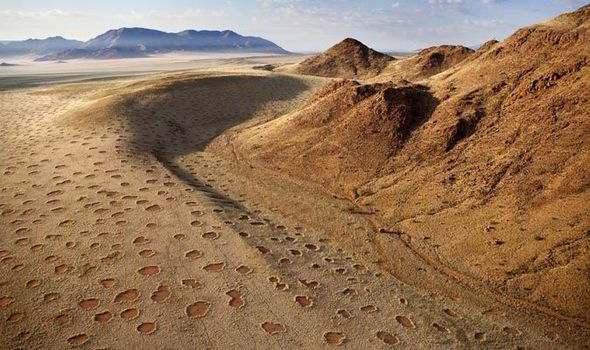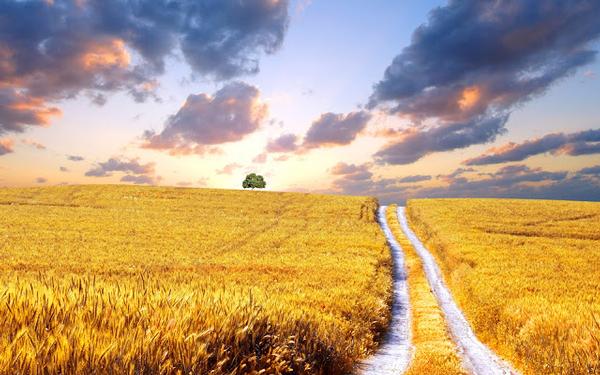This continues my previous post, toying with the notion of what a Romantic geomorphology would be like. This is based on the Romantic movement in art, literature, and science, rather than the more common meanings related to amourness and love, or to unrealistic idealism. Though, come to think of it, maybe Romantic geomorphology in those terms is also worth thinking about . . . .
Anyway, in the earlier post I noted that Daniel Gade’s book, Curiosity, Inquiry, and the Geographical Imagination (Peter Lang publishers, 2011) proposed 14 tenets of the Romantic imagination as it relates to research. Eight of them, in my view, apply readily to geomorphology and geosciences in general, though certainly not all practitioners display or even aspire to all of these traits. Six others need a bit more dissection.
Search for the Exotic
Romantic scholars are drawn to anomalies and dissimilitudes. “Extreme, bizzare or grotesque patterns of the world held an uncanny attraction for the Romantic mind,” Gade writes. We can assume he refers to something beyond the interest in oddities and extremes that pretty much all humans share. He writes of research that purposefully seeks out exotic locations and situations.
Certainly this describes much of geoscience. We are inordinately drawn to the spectacular, active landscapes of, e.g., New Zealand or the Himalayas. We spend a lot of time trying to explain mysteries such as the sliding rocks of Death Valley, the fairy circles of Namibia, Uluru, and the like. We are drawn to spewing geysers, the deepest caves, the highest cliffs. What curious scientist could not wonder, and seek to learn about such things?

Fairy circles in the Namibian desert (www.express.co.uk).
However, we also have a mandate to deal with our planet as a whole, as it presents itself to us. We cannot do that by restricting our research to the places that are most scenic, fun, or exotic. In fact, those that do the (literal and figurative) dirty work of research in urban landscapes, surface mined areas, and other active and important sites that do not generally appeal to the Romantic imagination deserve a great deal of credit.
Some of us (well, me, anyway) are also coming around to a somewhat different view of exotica. The perfect landscape concept I’m always on about is based on the idea that any Earth surface system, whether the Geysers of Yellowstone, the Atacama desert, wheat fields of Ukraine, or an urban brownfield, represents a specific combination of environmental controls and a specific chain of historical events. The probability of these specific combinations occurring in any given time and place are vanishingly small. Thus to some extent they are all perfect, unique, and idiosyncratic, whether or not they are exotic.

A perfect Ukrainian wheat landscape (www. express.be).
Focus on the Particular
Romantic affinities lean toward the “particularity of the material” and prefer empiricism to theory and the local to the global. In this sense many geoscientists share the Romantic sensibility, and many do not. However, in recent years it is increasingly recognized, even among those who lean toward theory and generality, that Earth systems have irreducible elements of geographical and historical contingency (i.e., perfection in the sense above). The more Romantic geomorphologists delight in this; others may only grudgingly acknowledge it.
Characterization of Place
Much of Gade’s discussion on this point is a tirade against the straw man of positivism. Positivist was a label attached to quantitative geographers and geoscientists during the “quantitative revolution” in the mid-20th century. It’s one of those things like “neoliberal” or “secular humanist” that are used by critics to “other” those they criticize. Very few self-identify as positivists, though many accepted the label, as it was often bandied about as characterizing anyone who is interested in measurement and not averse to mathematical and statistical methods. Few geomorphologists or quantitative geographers care much about –isms, so there was never much pushback on this label. However, if you read the literature on the scientific nature of physical geography and Earth sciences, you realize that even among the quantifiers you could classify at least as many as critical realists, pragmatists, or phenomenologists as positivists.
Anyway, though, an interest in place fits neatly with the (renewed) attention to historical and geographical contingency in geomorphology, and the Romantic geomorphologist would be right at home with it (pun intended).
Depreciation of the Obvious
Here the Romantic inquisitor is not happy with pedestrian conclusions or well-worn topics. Unexpected findings are what excite her. Again, we can assume that this means something more than the excitement over new findings and groundbreaking results that characterize any good scholar, Romantic or otherwise. The Romantic as idealized by Gade is not just pleased to happen upon such things, but is constantly pushing for them. In particular, this involves deliberately countermanding prevailing viewpoints and conventional wisdoms. Some very interesting geomorphology has been based exactly on this approach. Some of it is highly esoteric, but some very practical—for example the notion that in some environments soil erosion on steep slopes should actually be encouraged, to develop arable valley-bottom soils.
Quest for authenticity
The examples here apply to cultural landscapes and are not readily applicable to geomorphology unless you resort to some notion of naturalness unaffected by human agency, which is difficult to justify here in the Anthropocene. The Romantic prefers the real to the fake; the idiosyncratic to the standardized; the local café to the fast food chain. In terms of personal preference (as opposed to research practice), most geomorphologists are pretty earthy folks (again, pun intended), and would agree with this perspective.
Diversity for its own sake
In this section Gade focuses on cultural diversity, and the Romantic appreciation for the value and uniqueness of each and every culture. In geomorphology a perfect landscape perspective, along with the burgeoning interests in geodiversity, pedodiversity, and biodiversity, is right in line with this.
The Romantic Geomorphologist
Taking into account all 14 tenets of the Romantic scholar’s imagination, and recognizing that few individuals, be they geomorphologists, cultural-historical geographers, or anything else, are likely to exemplify all of them, I think it can be said that there exists a strong tradition and a strong contemporary strand of Romantic geomorphology. For what it's worth.
